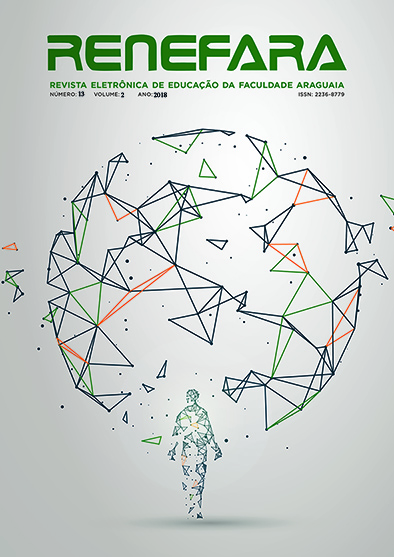EDUCAÇÃO DE PESSOAS QUE APRESENTAM TRANSTORNO DO ESPECTRO AUTISTA: PERSPECTIVAS DA INCLUSÃO
Keywords:
Autismo, Educação Especial, Ensino, InclusãoAbstract
A inclusão de pessoas com Transtorno do Espectro do Autismo "“ TEA, dentro de uma unidade de ensino é um desafio para a comunidade escolar, a família e estudiosos, o que justifica pesquisas dessa natureza. O objetivo do presente estudo foi revisar os fatores causais do TEA, enfocando um pouco da genética, e discutir a inclusão do autista nas escolas brasileiras, de acordo com as perspectivas da legislação brasileira. Foi realizada uma revisão da bibliográfica nas bases de dados Scielo, PubMed, Web of Science, BVS, LILACS, e banco de teses da CAPES. Os resultados mostraram que o processo de inclusão no Brasil e, em especial desses alunos, apresentam grandes entraves, entre eles: a ausência de uma certificação diagnóstica apresentada pela família do aluno; capacitação/formação dos professores na área da Educação Especial; falta de uma proposta pedagógica diferenciada para esse tipo de aluno e infraestrutura inadequada nas escolas. Por outro lado, o país tem avançado e conseguido vitórias como: o Plano Nacional de Educação; Estatuto da Criança e do Adolescente; a Lei nº 12.764/2012, que Instituiu a Política Nacional de Proteção dos Direitos da Pessoa com Transtorno do Espectro Autista; e a Lei nº 13.146/2015, chamada de Lei Brasileira de Inclusão da Pessoa com Deficiência (Estatuto da Pessoa com Deficiência). Esses avanços na legislação têm garantido o acesso ao ensino básico e ao ensino superior, tanto no setor público quanto no privado, contribuindo para a melhoria da qualidade de vida dessas pessoas.
Downloads
Published
Issue
Section
License
The copyright of the published articles will be transferred to the Uniaaraguaia Magazine, allowing its subsequent reproduction as transcription and with due citation of source. In the event of acceptance and before the publication of the article, the plaintiff (s) shall write a statement formally transferring copyright to the magazine.
The author may also print and distribute copies of his article, provided that he mentions that the rights belong to the Uniaaraguaia Magazine.
Author rights include the right to reproduce in full or partly by any means, distribute this article, including figures and photographs.
By submitting originals to the Uniaaraguaia magazine, the author or authors express agreement with the following terms:
a) Authors maintain copyright and grant Uniaraguaia magazine the right of first publication, with the work simultaneously licensed under the Creative Commons Attribution license that allows the sharing of work with recognition of the authorship and initial publication in this magazine.
b) Authors are authorized to assume additional contracts separately, for non-expiration distribution of the work version published in this magazine (eg publish in institutional repository or as book chapter), with recognition of authorship and initial publication in this journal.
c) Authors are allowed and are encouraged to publish and distribute their work online (eg in institutional repositories or on their personal page) to any point before or during the editorial process, as this can generate productive changes as well as increase the impact and citation of published work.

